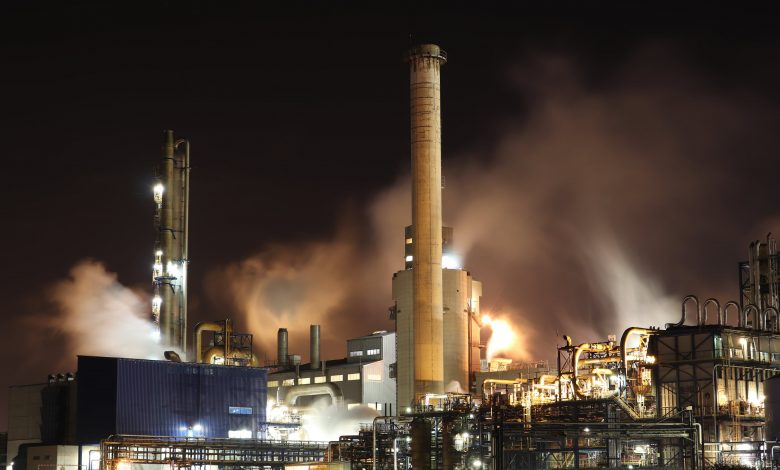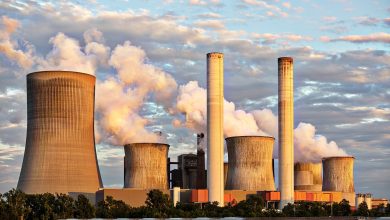Will Carbon Capture Save the Fossil Fuel Industry?

Solutions for the Fossil Fuel Industry
In the age of fighting climate change, the fossil fuel industry has been labeled as the enemy. Numerous environmental organizations and sustainability advocates have been calling on global policy makers to move forward with legislation to reduce the use of fossil fuels like oil, coal, and natural gas. Throughout the history of human civilization, the utilization of energy resources has helped to ignite the advancement of global growth. As humanity’s ability to extract energy resources has grown significantly over the past century, the world has experienced enormous population growth in addition to a swelling global economy. However, as concerns related to the impacts of climate change have been mounting among the world’s policy makers, some analysts within the energy industry are worried that calls to reduce energy usage could have an adverse impact on global economic growth. What if there was a way to continue using fossil fuels without needing to be concerned about greenhouse gas emissions? This is preciously the scenario that technical innovators are attempting to explore through the use of carbon capture technology.

Global Growth and Energy Production
Global growth has been fueled by the fossil fuel industry. In 1900, the global population was around two billion. During this period, economists have estimated that the value of the world’s economy was equivalent to about a trillion dollars. Although, as the arrival of petroleum products and the electric grid first started to become prevalent, growth exploded upwards. Since then, the global population is on the verge of surpassing eight billion, while the global economy is now worth at least $75 trillion (Randolph and Masters, 2018). Over the past century, there has been nearly a 100-fold increase in the consumption and utilization of fossil fuels. There is little doubt among global economists that the development of fossil fuels has provided the stimulus needed to fuel population growth and economic development. Given the ability for fossil fuels to power global growth, energy experts and environmentalists are starting to question the sustainability of fossil fuels.
As the scrutiny over carbon emissions released from the fossil fuel industry has grown in recent years, some fossil fuel executives are hopeful that the development of carbon capture technology may be able to effectively reduce the environmental impact of burning fossil fuels. The concept of carbon capture technology is relatively simple. The process involves removing carbon dioxide emissions directly from point sources such as power plants or industrial facilities. There are a number of pseudonyms for this process. Carbon capture and sequestration, carbon capture and storage, and carbon control and sequestration are all referring to the process of taking in waste carbon dioxide from point sources in order to prevent the emissions from dissipating into the atmosphere. The goal of this technology is to reduce the amount of greenhouse gas emissions from energy-generating sites and industrial land uses. After the carbon dioxide is captured from a point source, it is then typically transported and deposited underground within dense geological formations.

Carbon Capture Technology
Carbon capture technology offers the potential ability to mitigate the fossil fuel industry’s contributions towards global warming and climate change. Using a wide array of technologies, innovative companies have started to employ sophisticated methods like membrane gas separation, gas hydrate technologies, absorption, adsorption, and a process known as chemical looping in order to capture carbon dioxide from the air. According to the Intergovernmental Panel on Climate Change, roughly 80 to 90 percent of carbon emissions can be captured from power plants when equipped with carbon capture technology. However, the same report from the Intergovernmental Panel on Climate Change also outlined the potential for this technology to vastly increase the cost of energy produced by up to 91 percent. Furthermore, these cost figures were evaluated based on the construction of new power plants which employed carbon capture technology from the very beginning of their operations. When this technology is added to older power plants, the cost of producing energy increases even more significantly.
Weighing the Costs
Even though the cost of carbon capture technology has been shown to dramatically increase the cost of energy production, what is the cost of doing nothing and allowing emissions to continue to rise? Will the cost of the impacts from climate change outweigh the cost of incorporating carbon capture technology within power plants? These are some of the questions that energy analysts and policy makers are attempting to evaluate. The economics of climate change are hard to predict. Evaluating the potential damages from an increase in severe storm events, flooding, droughts, wildfires, and sea level rise has yielded inconsistent results. However, researchers from the Potsdam Institute for Climate Impact Research, the Earth Institute at Columbia University, and the Grantham Research Institute on Climate Change and the Environment released a report in 2019 that highlights how the future cost of climate change impacts has typically been underestimated by previous reports.
A 2018 study conducted by the UK National Oceanographic Centre concluded that rising sea levels alone may cost the global economy $14 trillion annually by 2010 (Jevrejeva et al, 2018). This level of economic impact would be devastating for nearly all of the world’s coastal countries. A similar study from the United States recently conveyed that the cost of protecting the nation’s coastlines from rising sea levels could rise to $400 billion over the next two decades (Rodrigo, 2019). Moreover, the report highlights how the cost could be much higher. “These costs reflect the bare minimum coastal defenses that communities need to build to hold back rising seas and prevent chronic flooding and inundation over the next 20 years” (Rodrigo, 2019).

Dire Consequences of Inaction
The failure to meet the United Nations’ 2 degrees Celsius global warming limits could result in catastrophic global economic consequences. According to Dr. Svetlana Jevrejeva, the lead researcher for the UK National Oceanographic Centre, “More than 600 million people live in low-elevation coastal areas, less than 10 meters above sea level. In a warming climate, global sea level will rise due to melting of land-based glaciers and ice sheets, and from the thermal expansion of ocean waters” (Jevrejeva et al, 2018). The Intergovernmental Panel on Climate Change says that because of these factors, the global sea level is expected to rise by 11 to 24 inches over the next century. The wide range in the estimated sea level rise is highly dependent on the amount of greenhouse gas emissions that are released into the atmosphere by 2010.
When compared to the consequences of not addressing rising greenhouse gas emissions, scientists say that the cost of increasing energy production today may vastly undercut the cost of waiting until its too late to act in the future. According to data from the U.S. National Energy Technology Laboratory, the continent of North America has enough carbon dioxide storage capacity to capture and store more than 900 years’ worth of greenhouse gas emissions based on current production rates. Geological formations beneath the surface of the Earth are currently viewed as the most viable places to store carbon dioxide that is captured from power plants. However, it’s important to note that technology is constantly changing. For example, scientists are researching how a process known as pyrogenic carbon capture and storage may be able to prevent greenhouse gas emissions while simultaneously improving soil fertility. While still in its infancy, this technology could capture carbon dioxide and turn it into a form of charcoal, which can then be spread over agricultural fields to increase soil productivity and fertility.

Effective Technology
Carbon capture technology has already proven to be effective in power plants. There are currently 43 large-scale commercially viable carbon capture and storage facilities around the world. Data from the International Energy Agency has conveyed that 30 million tons of carbon dioxide are captured and stored annually through the use of existing carbon capture technology (Varanasi, 2019). However, the Global CCS Institute says today’s carbon capture facilities are only preventing less than one percent of the carbon emissions that will be required to meet the targets outlined by the Paris Climate Agreement. Moreover, the carbon capturing is not equitably spread around the world. More than 70 percent of the greenhouse gas emissions that are captured though this technology is happening in North America (Varanasi, 2019).
American Innovations
Texas has become the king of carbon capture in the United States. Through a practice known as enhanced oil recovery, oil producers in West Texas are capturing carbon dioxide and injecting it back into the ground in a process similar to fracking. Up to 20 million tons are carbon dioxide have been captured annually in Texas alone (Lackner, 2002). Out of the 18 carbon capture facilities in the United States, 10 of them are located in Texas. If all the carbon capture operations continued to run throughout the year, a reduction in greenhouse emission emissions equivalent to removing 5.4 million cars from the road would be achieved (Varanasi, 2019). However, due to the cost of the process, not all facilities are able to fully operate. Fossil fuel advocates have been lobbying members of Congress to provide financial incentives to help cover the cost of operating these technologies.
While the science behind carbon capture technology is clear, the financial viability of the process is less clear. Some scientists have been working diligently to rethink the cost profile of carbon capture technology. Instead of focusing on the cost-prohibitive process, scientists are working to identify how to make the system profitable by putting the captured carbon dioxide to industrial use. One idea that is already taking place is the notion that captured carbon dioxide can be transformed into useable products. Covestro, which is a leading manufacturer of high-tech polymer materials, has been working to transform carbon dioxide into polyurethane foams, which can be used for things such as seat cushions. Moreover, other companies are researching how to develop carbon fiber from carbon dioxide gas. Another option that is being evaluated involves synthesizing new types of fuels from carbon dioxide.

Environmentalist Pushback
While the future of carbon capture technology seems promising, not everyone is on board with the idea. In a letter sent to members of Congress in 2019, over 600 environmental groups lambasted carbon capture technology as a scheme to keep fossil fuels in play. Environment groups have been lobbying Congress not to move forward with technology options that benefit the interests of fossil fuel companies. Environmental groups often label carbon capture technology as a “false solution.” Instead, many environmentalists say that more resources need to be dedicated towards renewable energy goals rather than fixating on technological innovations to keep the fossil fuel industry alive. The fossil fuel industry has been fighting back against these claims, by highlighting how environmentalists seem to be stalling meaningful changes in the fossil fuel industry.
Sources
Biniek, K., et al. (2018). “Why commercial use could be the future of carbon capture.” McKinsey & Company.
Harder, A. (2020). “Cheap oil shelves carbon capture project.” Axios Energy & Environment.
Jevrejeva, A., et al. (2018). “Flood damage costs under the sea level rise with warming of 1.5?°C and 2?°C.” Journal of Environmental Research Letters.
Lackner, K. (2002). “Can Fossil Carbon Fuel the 21st Century?” International Geology Review: Vol. 44, p. 1122–1133.
Mosely, T., and Hagan, A. (2019). “The Future Of Carbon Capture: An Old Idea To Fight Climate Change Gets New Look.” WBUR.
NRG. (2020). “Carbon capture and the future of coal power.” NRG Energy, Inc.
Randolph, J., and Masters, G. (2018). “Energy for Sustainability: Foundations for Technology, Planning, and Policy.” Island Press.
Rodrigo, C. (2019). “Protecting US from rising sea levels will cost $400 billion over next 20 years, study finds.” The Hill.
Varanasi, A. (2019). “You Asked: Does Carbon Capture Technology Actually Work?” Columbia University Earth Institute.



